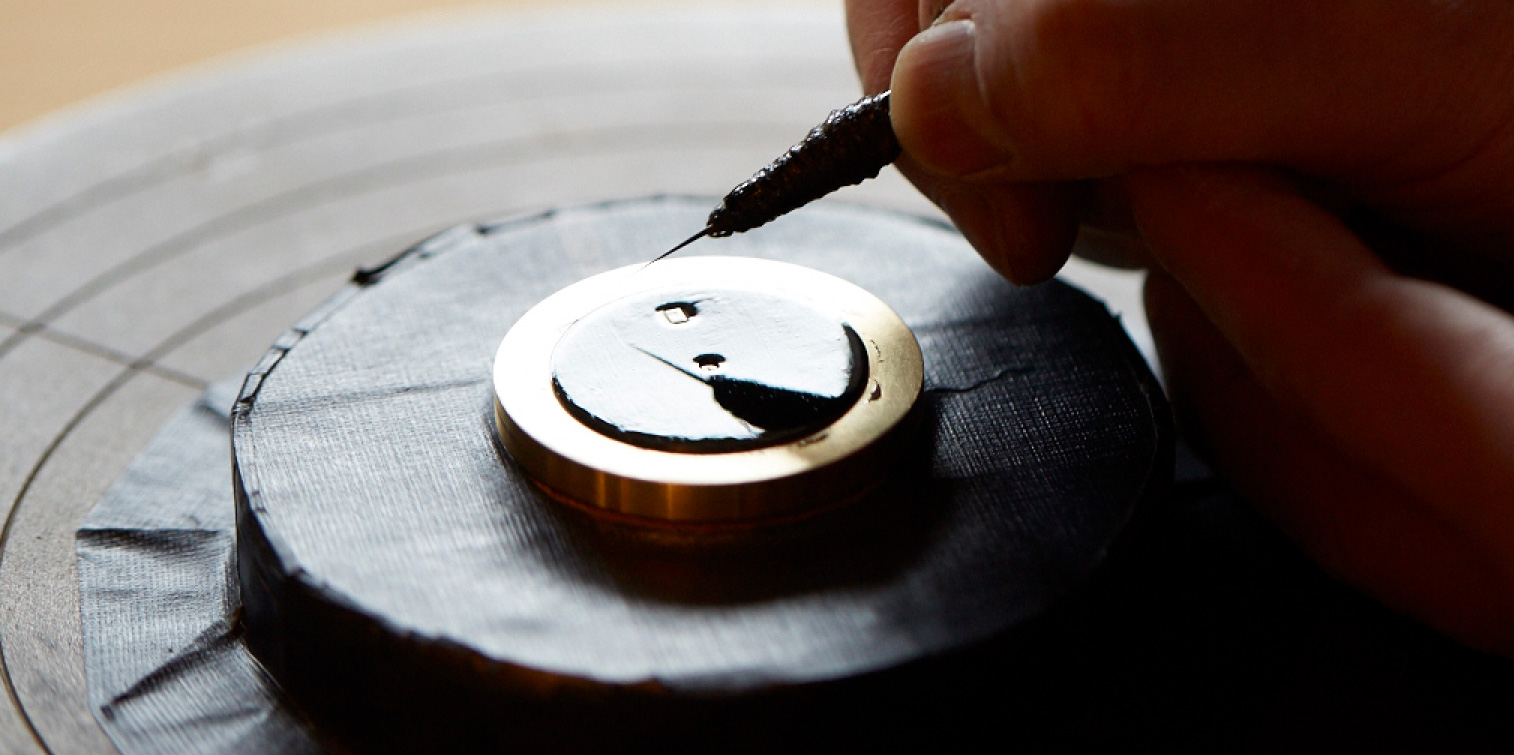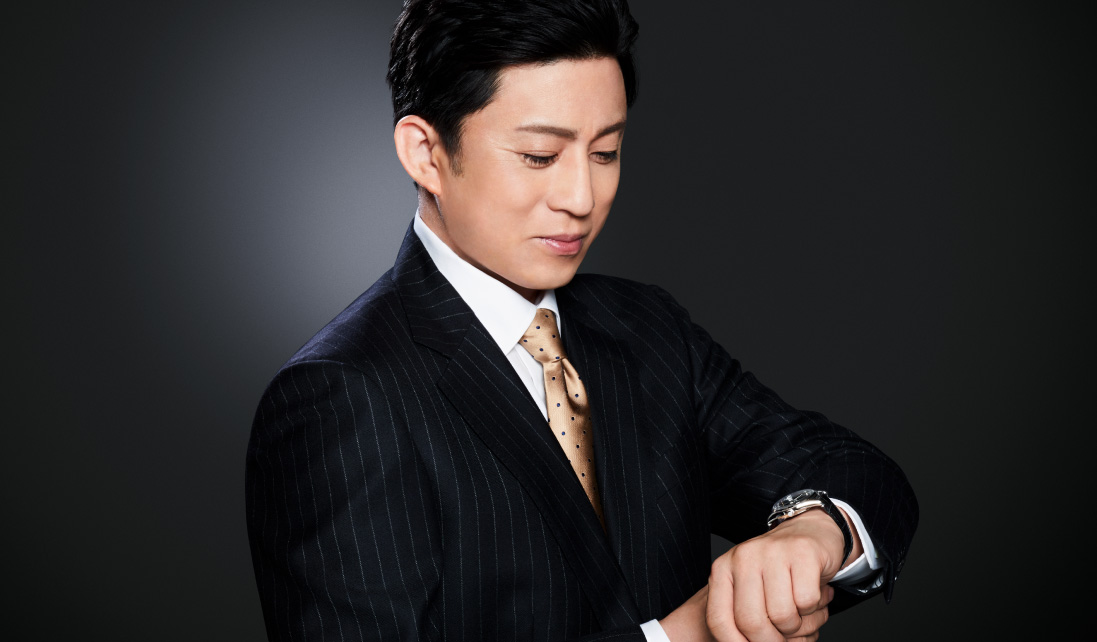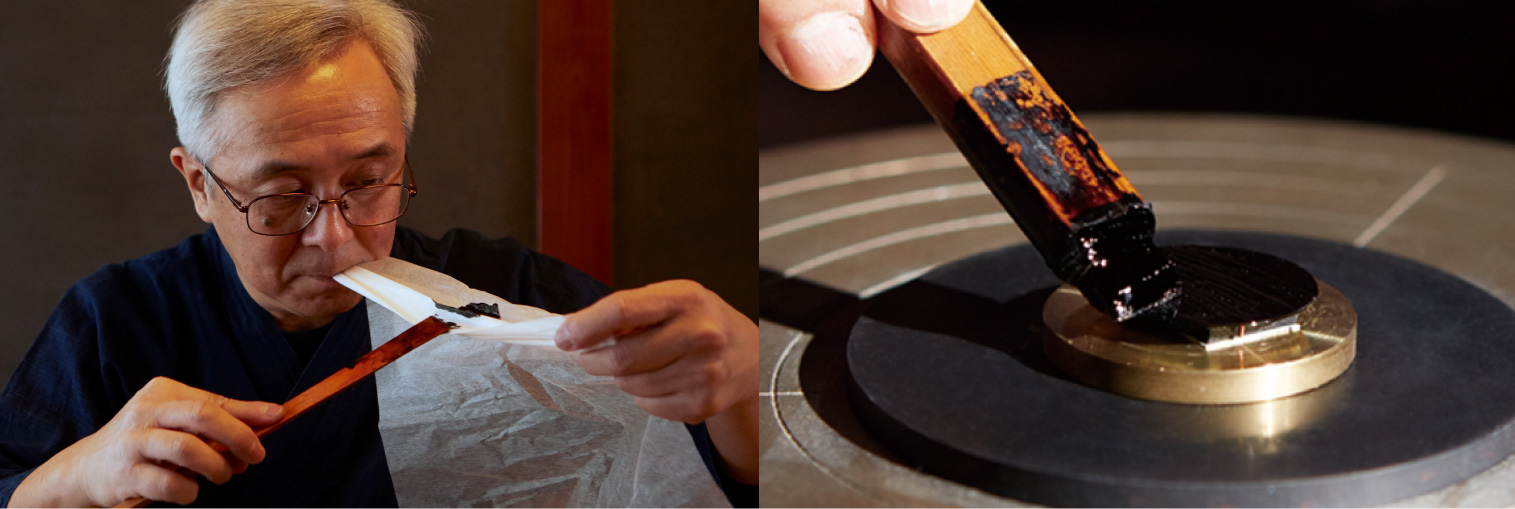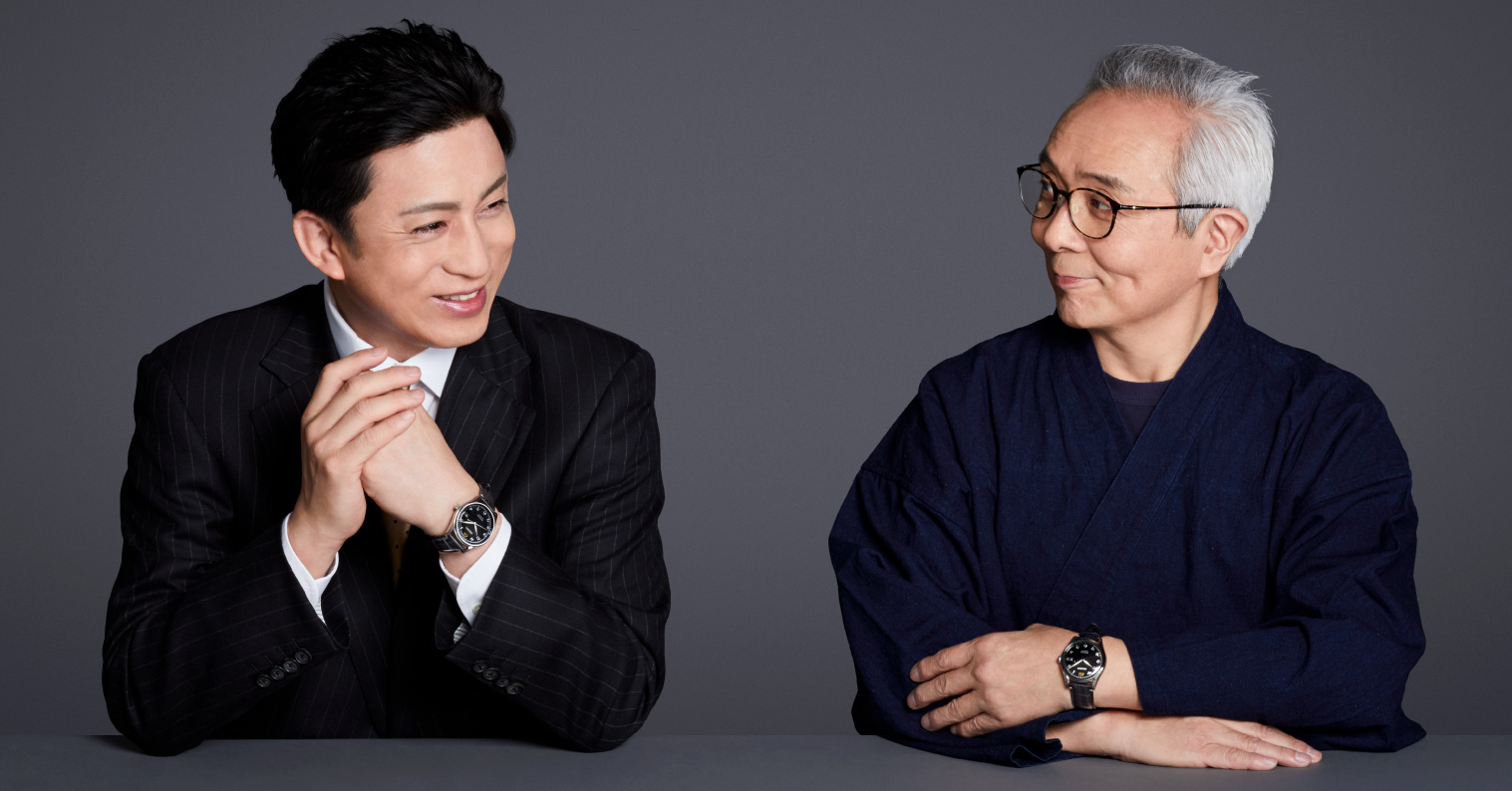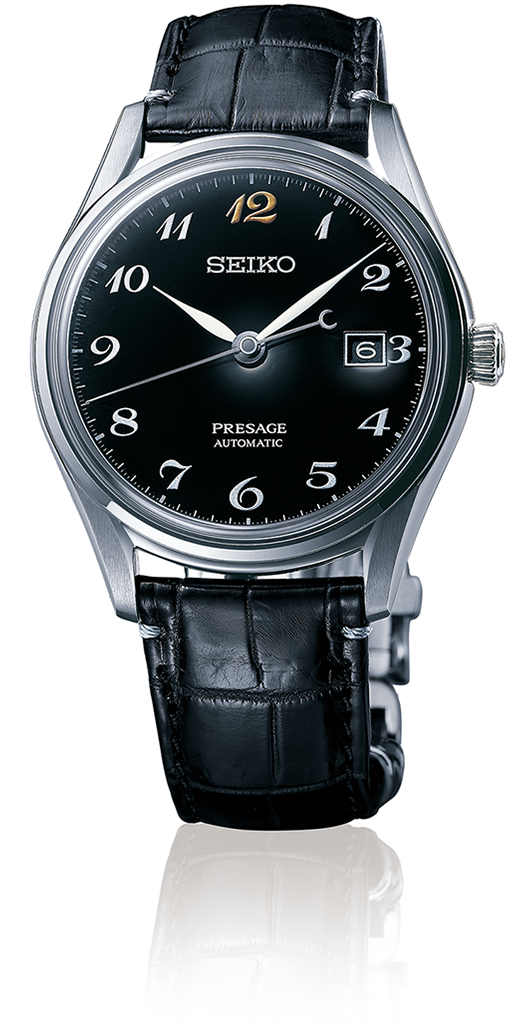Countless layers of darkness possible only after rounds of applying 0.1-mm-thick coats and polishing
Matsumoto Koshiro: This dial is thin, but it still gives a sense of depth to the extent that I feel that I am about to be almost swallowed by it. Indeed, it has a jet-black coating. To borrow an expression from novelist Junichiro Tanizaki’s essay titled “In’ei Reisan” (In Praise of Shadows), its hue appears to be “built up of countless layers of darkness” (translated by Thomas Harper and Edward Seidensticker). How did you create such depth?
Isshu Tamura: As you quoted the Japanese word “taiseki” that means “build up,” it is possible to deepen the hue just by building up layers of urushi in the lacquering work on the dial. I understand that the word “Japan” is used abroad to refer to lacquerware in recognition of the fact that the unique hue of lacquerware is rooted in Japan’s tradition.
Matsumoto: I now know that the process of lacquering is not an easy one — you cannot finish it with just a single lacquer coating. Did you have any specific difficulty in employing your lacquering expertise to wristwatch dial production?
Tamura: I went through multiple rounds of lacquer coat application and polishing. The difficult part of the process was to choose exactly when I should go ahead with each round. How long it takes for the lacquer to dry varies each time, depending on the temperature and humidity levels. Lacquers tend to harden as they take in moisture in the atmosphere. This means they tend to dry more quickly during the tsuyu rainy season. Even so, I had to keep the thickness of lacquer coatings at 0.1 millimeter. In the final finishing step, I coated one of my fingers in a special kind of powder to buff the surface of the urushi dial. This step was also meant to be my last moment to check the quality of the finished work. I did everything by hand throughout the entire lacquering process. I kept relying on my experience and intuition, not reason.
No matter how monotonous the lacquering work may appear to be, urushi artisans stay concentrated and continue doing their utmost throughout each lacquering step. Tamura says, “I always begin work by thinking first of all how I can do something, instead of thinking that I won’t be able to do it at all.” Matsumoto looks convinced that he has much in common with Tamura.
Matsumoto, wearing the Presage watch, says, “This hue can be possible only with urushi. It’s black, but it’s absolutely beyond an ordinary black tone.” The kabuki actor is amazed by the depth of the urushi craftsmanship.




